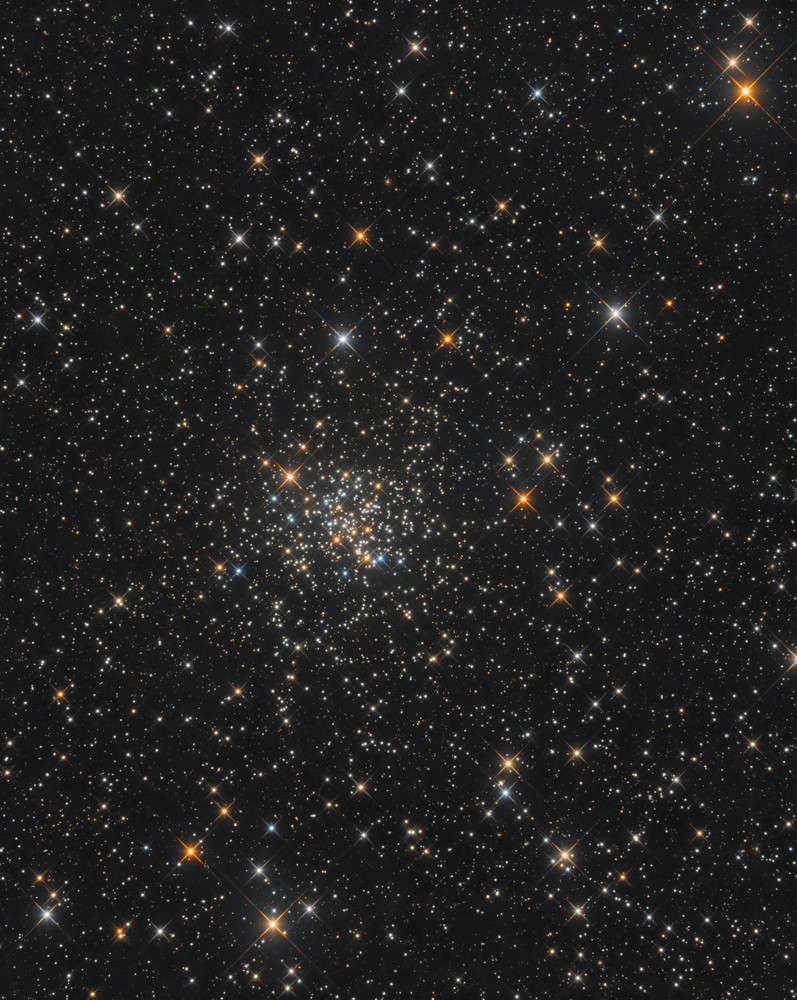|
Location / Date |
Zellerndorf, February - March 2020 |
|
Telescope / Mount / Guiding |
ASA 10" Astrograph, ASA 3" Wynne-Corrector (focal length 910mm) |
|
Camera / Exposure |
Moravian G3-16200, Astrodon filters L 54 x 10min, R 12 x 5min bin2x2, G 12 x 5min bin2x2, B 15 x 5min bin2x2 Total exposure time: 12h 15min |
|
Processing |
PixInsight, Fitswork, Photoshop |
|
Notes |
Messier 67 (M 67 or NGC 2682) is an open cluster in the constellation Cancer. Scientifically, Messier 67 is one of the most extensively studied star clusters. The reason for this is its unusually high age - for open star clusters - which is estimated at 3.5 to 5 billion years. According to the latest research, it is about 4 billion years old. This can be seen from the position of the so-called turn-off point in the Hertzsprung-Russell diagram: the cluster contains no main sequence stars of spectral type F or hotter, and the brightest stars in the cluster are all supergiants. The cluster contains nearly 200 detected white dwarfs, over 100 sunlike stars and many red giants. The metallicity of the members of the cluster also points to an age of the stars that is comparable to that of our Sun. Many scientific studies focus on the evolution of the stars, since all members of Messier 67 were formed almost simultaneously and have the same distance from the observer on Earth. A small number of blue stragglers (Blue Stragglers) are the only exception and their origin is not yet fully understood. |
